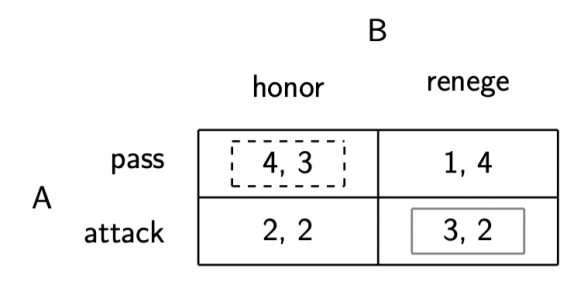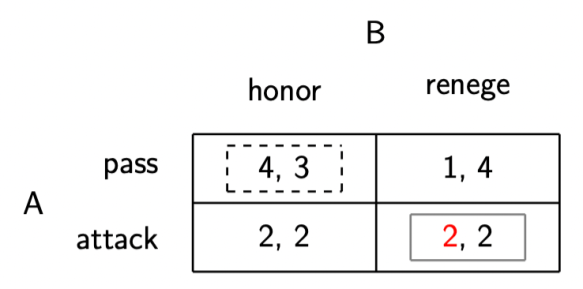The Politics of the First World War in the Classroom #WWIinrealtime
#wwi #textbook
My textbook, The Politics of the First World War: A Course in Game Theory and International Security, is out this week (Amazon). And I figure it’s worth talking about how I envision it being used in the classroom. The most important thing to note is that the textbook is supposed to be a bit, in Cambridge’s words, “weird.’’ It’s designed to do things that other IR textbooks don’t do, putting deep engagement with a historical case alongside a survey of the literature on international conflict and an undergraduate game theory course.
That ain’t normal.
But the book’s uniqueness puts the onus on me to convince instructors that it need not be used only for something like my “World War I in Real Time” course that inspired it. As a representation of said course, we can generously call this book “abridged,” apart from the game theory content. The relatively limited World War I content is more feature than bug, though, because those class sessions for which instructors don’t assign a chapter (it’s got only 15, after all) can go one of two different ways, creating two rather different courses:
- A game theory course. Deeper dives into game theory, even if only to get more practice with what’s already there or to expand the set of applications. (Practice is everything when it comes to writing and solving your own models. Everything.)
- An international security course. Assigning some of the journal articles and books that the chapters reference in their penultimate sections (or stuff in the same area), which the students can then use their developing theoretical skills to evaluate.
I’ve taught this course both ways over the years, and each has its merits. In this post, I’ll share some of the strategies I’ve adopted in both versions of the course, including two sample assignments, to give instructors a sense of what worked for me as I trialed and erred my way through early iterations of this material.
A game theory course
Choosing the right level of formality for the book’s game theory component wasn’t easy (and I owe Toby Rider a debt of gratitude for helping me make some crucial decisions on this, especially in the war termination chapters). Modelers will notice pretty quickly some things left out or treated only superficially, like iterated games with punishment strategies or restrictions on out-of-equilibrium beliefs in Perfect Bayesian Equilibrium.
Off-textbook sessions can easily dive into these topics, though, because the main-text material develops the foundations of equilibrium reasoning (the big payoff, IMHO) and emphasizes basic math practice. Chapter 11’s treatment of the Christmas Truce, for example, discusses how to use punishment strategies to induce cooperation in the Iterated Prisoner’s Dilemma (a workhorse model in the study of cooperation). But I don’t solve that game, leaving that for further skills development if the instructor wants to make this a game theory course. It’s easy to imagine an off-textbook session on how different punishment strategies (tit-for-tat, penance, grim trigger, etc.) induce cooperation of different quality and variable robustness under different conditions, allowing students to get extra practice with Subgame Perfect Equilibrium and to think about additional applications of repeated games.
An international security course
Games may be the centerpiece of each chapter’s theoretical work, but they need not dominate off-textbook sessions. If instructors prefer to highlight the international security component, the final few sections of each chapter contai reviews of the related literatures, from arms races (Chapter 3) and solutions to the collective action problem (Chapter 7) to the role of national leaders in international politics (Chapter 13) and the relationship between democracy and peace (Chapter 14). I survey the contemporary literature on these and numerous other topics, and instructors can assign a sample of the cited work to give students more direct exposure to the scholarly literature. An instructor might, for example, assign empirical work to expose students to the ins-and-outs of interpreting quantitative models or evaluating case selection in qualitative models. I’ve taken both tacks, and the book’s focus on rigorous theory helps students encounter unfamiliar empirical methods with appropriate standards of judgment—not just the all-too-pervasive (and unjustified) “math”-phobia.
Another option for this version of the course is to assign supplementary historical readings as applications of ideas introduced in the text. The book’s discussions of coordinating limits in the Korean War (Chapter 10), the termination of the Russo-Japanese War (Chapter 12), and the duration of the Chinese Civil War (Chapter 11) are all good candidates. But instructors may also assign histories of whatever crises, wars, and near-wars they know well—from the Cuban Missile Crisis to the War of the Pacific to the Iraq War—and encourage their students to analyze them in light of the theoretical models and literatures they’ve encountered in the textbook. I’ve not taught this analytical-history version of the course, but I plan to the next time I get a chance—sadly, in spring 2020.
Some assignments
Finally, I’d like to highlight two assignments that I’ve trotted out in both versions of the course, each of which the students (and this instructor) take to pretty well.
First, as an application of equilibrium reasoning and how it helps us think through counterfactuals, I like to give students the following writing prompt after Chapter 8:
Put yourself in [Chief of the German General Staff] Moltke’s shoes and come up with an alternative strategy—either in the initial execution of the war plan or in managing the offensive once [French General] Joffre orders the Allied retreat—and then analyze whether your alternative might’ve made a substantial difference in the outcome of the invasion of France in 1914.
Armed with some practice using logical tools and equilibrium reasoning, students typically don’t use this to engage in the loose speculation that every professor rightly fears would happen in response to such a question. (We can’t all be Harry Turtledove, who seems to just come by this stuff naturally.) Rather, the course’s focal formalities prove to be a nice source of discipline for counterfactual, “what-if?” reasoning. Students have to think hard about why countries attack who they attack and how and when they attack them, how likely targets respond, how that influences initial attack decisions, etc. Seriously, this might be my favorite thing I’ve ever assigned: the answers, as you might imagine, are often pretty varied (some workable, some not, and very many of them delightfully creative). But when we discuss and evaluate their alternative strategies as a class, I’m always impressed at my students’ ability to surprise me; with a shared set of logical standards, their discussions in the post-assignment session are insightful, productive, and just fun.
Second, I like to do a puzzle-focused class session, where students submit beforehand their own historical puzzles based on the First World War (this when they’ve been reading narrative histories of the war throughout the semester—I’ll have another post on my preferred sources for that version of the course soon). I sort (and edit for clarity where necessary) the submitted puzzles, then lead a discussion in which we devise collectively models to resolve those puzzles. We specify and solve these proposed games as a group, and it’s a blast. Students feel some legitimate ownership of the course material, and they see the fruits of using the theoretical tools they’ve been learning and practicing through the semester. It’s a chance to see their developing skills at work, of practicing the procedures of model-building that the chapters themselves cover at length. Lightbulbs go off in that session, and as an instructor, it’s superfluously fun to watch. I can’t recommend this exercise enough…but only in the latter part of the semester. Too early, and a few students will get lost; I like it as a kind of pre-Armistice exercise.
I’ll have more to say about the First World War, as well as the textbook, how I used it, and how other instructors might in the coming weeks and months. But I hope this initial post gives a flavor of just how flexible the book can be, its admitted weirdness notwithstanding.


